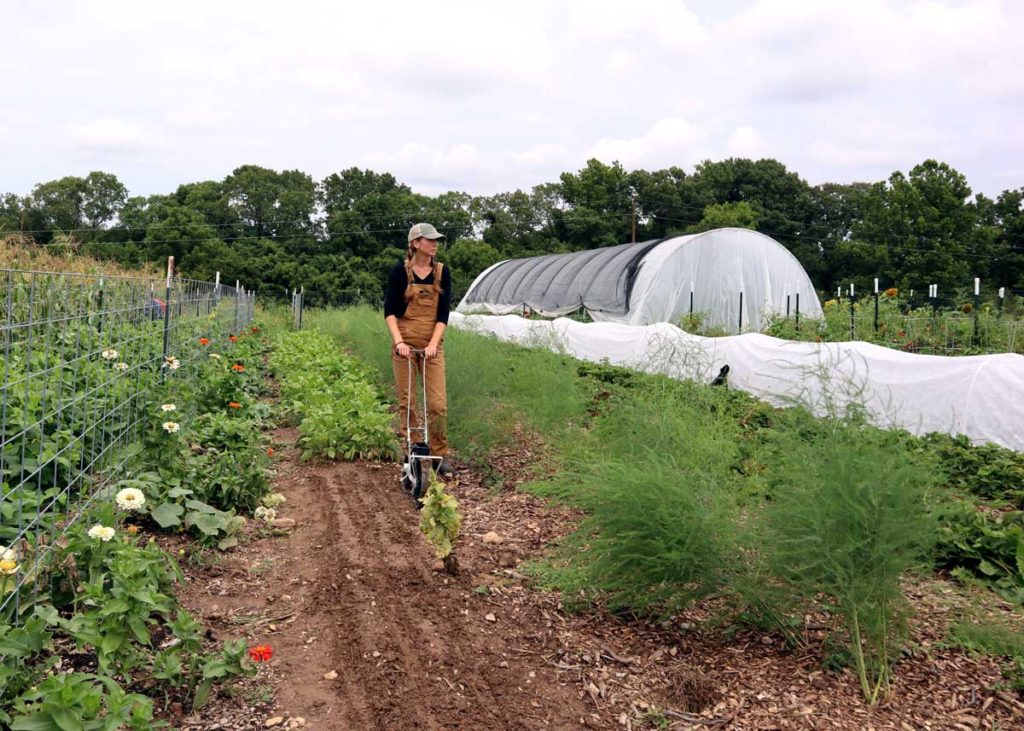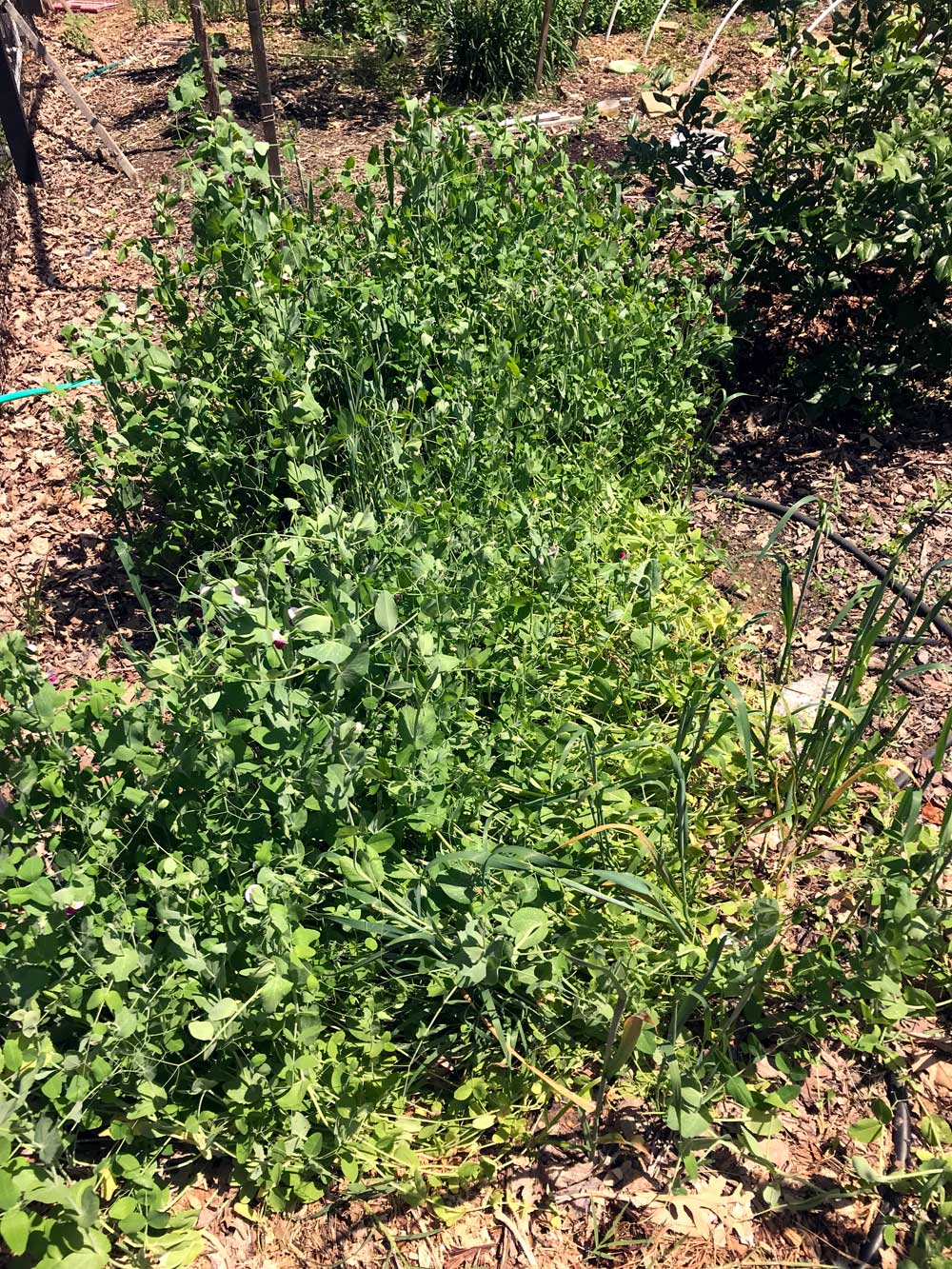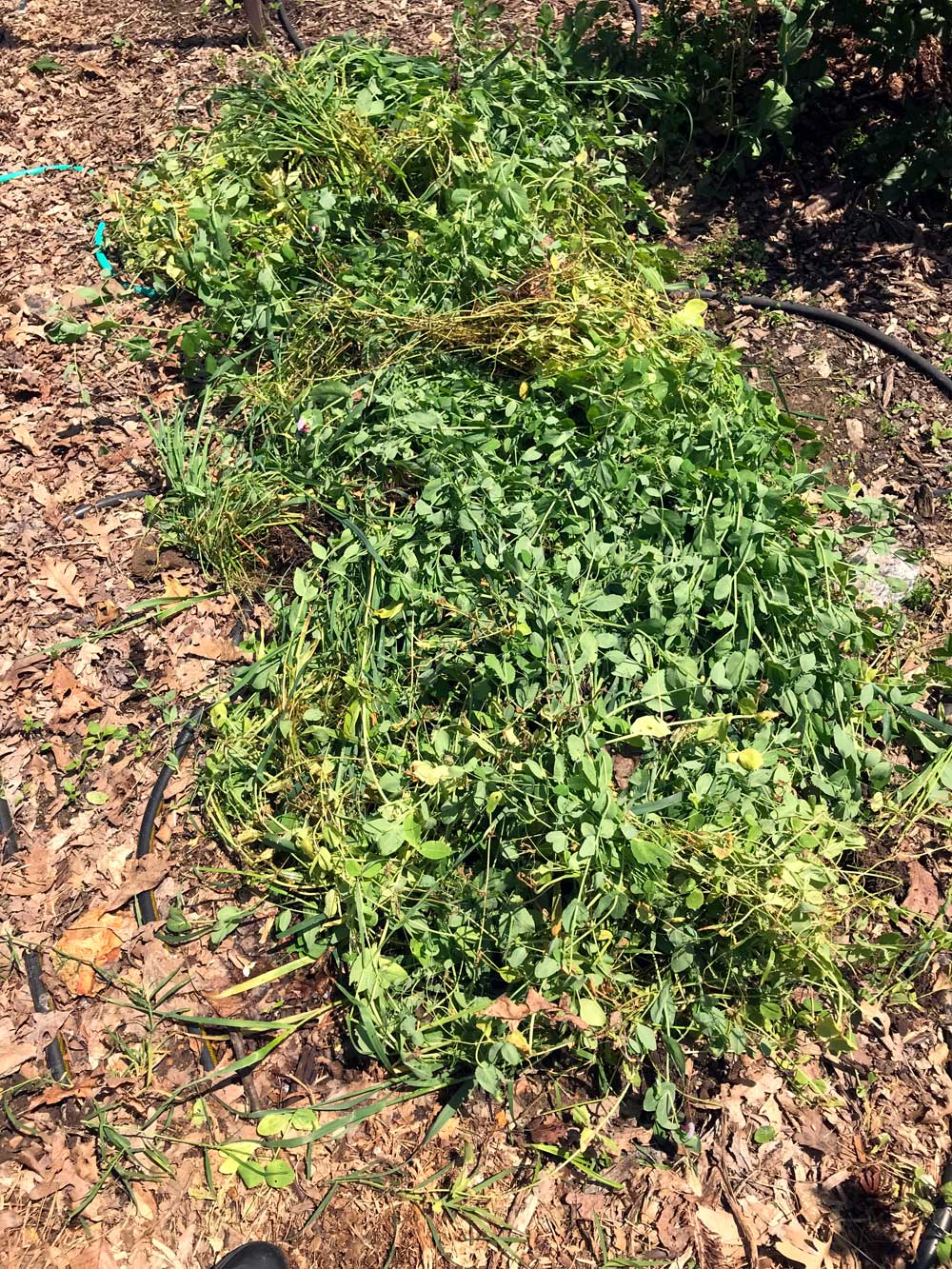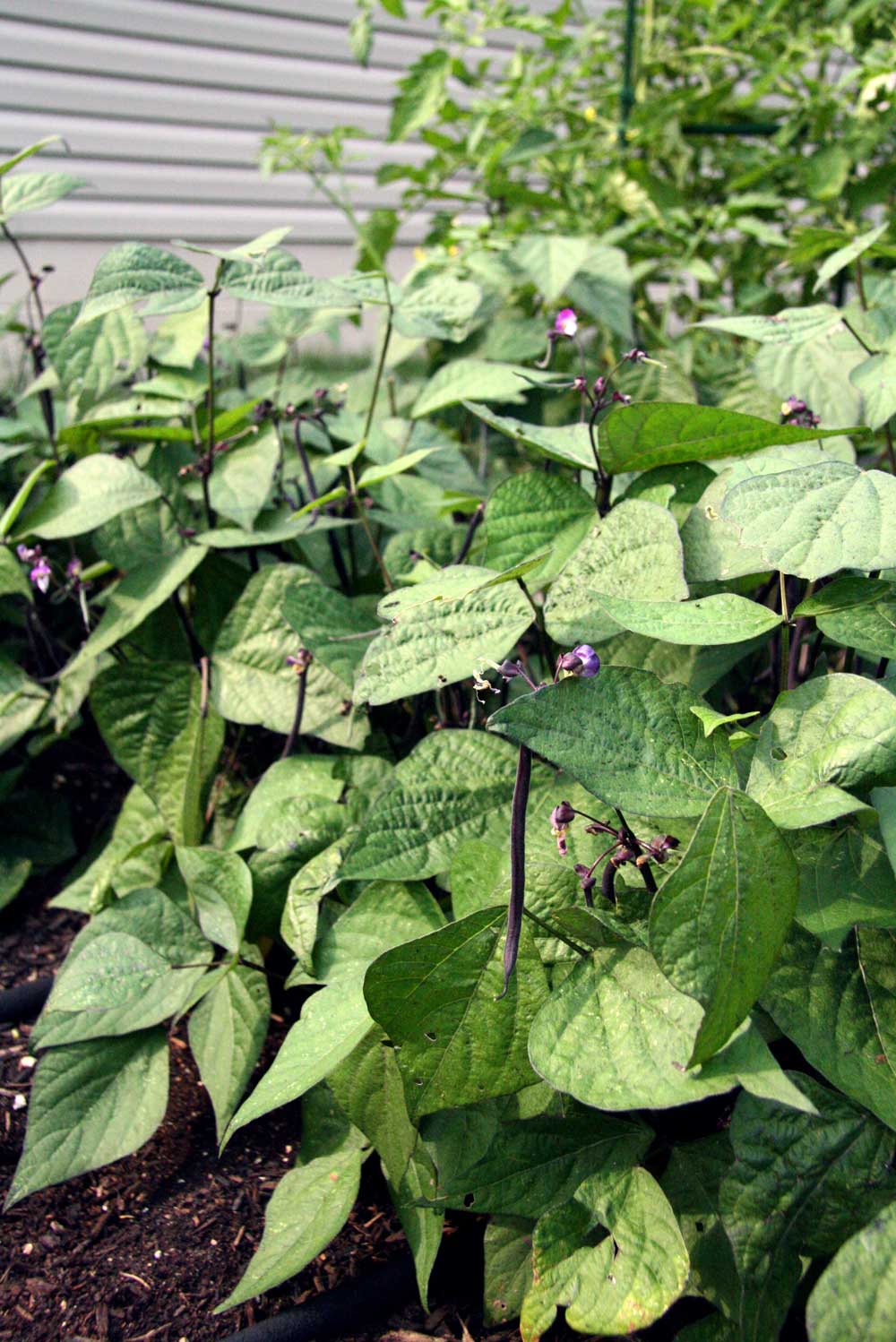We often hear of cover crops used on large scale farms but what about the home garden? I’m here to tell you, you can do this as a home gardener and it will improve your garden soil and as a result your yields. I personally have used several cover crops in my home garden and they are worth the effort and not hard to do.

What are cover crops and why would you want to use them?
Cover crops are grown with the purpose of improving the soil rather than for crop yield and harvest.
Cover crops have many benefits like:
- improving soil fertility
- preventing soil erosion
- breaking pest and disease cycles in the soil
- adding organic matter
- increasing the biological life in the soil
- suppressing weeds
What do all those benefits equal in the end? Healthy soil and consequently INCREASED YIELDS. All gardeners want that right?!
How do you plant cover crops?
Sow cover crop seed into loose and weed free soil. Seed planting depth depends on which specific cover crop you are sowing. But for the most part, cover crops can be broadcast and raked into the soil. It’s very easy!
After planting, keep the soil moist until the seeds germinate. Continue to water as needed until they grow to the point of flowering.

When do I remove a cover crop?
Once those flowers come out you need to kill the cover crop within 7 days. If you leave them longer they may go to seed and become a weed in your garden bed.
The best practice is to leave the roots, leaves, and stems with the soil after terminating the cover crop to break down. It allows you to get the full benefit of the nutrients from the cover crop.

How do you terminate a cover crop?
To kill them at flowering there are several options.
- Mow or cut cover crops down. This works for some cover crops, but not all since some grasses can regrow even with cutting or mowing.
- Till cover crops in. Since we personally prefer no-till gardening, I don’t recommend tilling them in but it is an option.
- Tarp cover crops. Pull a black tarp over the top and keep it there for 10 days plus or minus some depending on what time of year it is. Often crimping is necessary before tarping. This can be done with a homemade set up like a T-Post laid down parallel on the ground tied with string. I have a video of how I do this HERE.
- Time cover crops with a frost. Certain crops like peas and oats will die with a hard frost. Plant a frost killed cover crop in late summer or fall. It will die back on its own.
- Solarize cover crops. This method uses a clear plastic sheet with all sides weighed down on the ground so no air can escape, the sun and heat will scorch the part of the cover crop above the ground. Note: this method may have negative effects on the soil microbial activity if it heats the soil as well.
If direct sowing, wait until two weeks after termination to plant. If you are transplanting plants you can transplant immediately after the cover crops is terminated.

What cover crops should home gardeners use?
What cover crops you use depends on where you live, and what your purpose is in growing them. (If viewing on a small screen turn screen horizontal so you can read the chart more easily)
| Common Cover Crops | When to Plant | Benefits | Additional Notes |
| Hairy Vetch | 4 weeks prior to last frost (Spring) 30-45 days before a killing frost (Fall) | Nitrogen fixing | Doesn’t do well with mowing since the vines get caught in blades |
| Field Peas | 4 weeks prior to last frost (Spring) or 8 weeks prior to first frost (Fall) | Adds biomass, nitrogen fixing, adds 90 to 150 lb. of nitrogen per acre | Oats often used as a nurse crop |
| Oats | 4 weeks prior to last frost (Spring) or 8-12 weeks prior to first frost (Fall) | Outcompetes weeds, nurse crop for legumes, adds biomass | |
| Cow Peas | After danger of frost has passed (Summer) | Adds biomass, nitrogen fixing, add 130lbs of nitrogen per acre, attracts beneficial insects at flowering | Doesn’t need much moisture |
| Crimson Clover | After danger of frost has passed (Spring/ Summer) 6-8 weeks before average first frost (Fall) | adds 70 to 150lb nitrogen per acre, nectar source for beneficial insects | Flowers at the same time as winter rye when overwintered |
| Winter Rye | 30-45 days before a killing frost (Fall) | Outcompetes winters annual weeds, produces lots of biomass, winter hardy | Can be used as forage, good paired with crimson clove and other legumes |
| Field Radish | After danger of frost has passed (Summer) | Loosens compacted soil | Often planted in combination with other crops |
| Buckwheat | After danger of frost has passed (Summer) | Establishes quickly and covers soil, attracts beneficial insects at flowering | |
| Sunn Hemp | After danger of frost has passed (Summer) | ||
| Sorghum Sudangrass | After danger of frost has passed (Summer) | Huge biomass producer, reduces compaction in soil, produces well even in soils with low fertility, nematode suppressor | Plants can grow 12 ft tall and become woody as they mature, terminate while vegetative |
| Barley | Fast biomass producer in cool weather |
 Peas and oats at flowering
Peas and oats at flowering  Peas and oats Right after pulling the crop to terminate it.
Peas and oats Right after pulling the crop to terminate it.
So what about other legumes like beans and peas? Can you plant beans and peas to enrich the soil and get a harvest too?
The answer to that second question is no (for the most part) and let me explain why. Beans and peas do add nitrogen to the soil. However, if you grow a cover crop past the flowering stage to where it is setting seed the nitrogen moves from the roots, leaves, and stems, up into the seeds. Roughly 80% of the nitrogen is stored in the seeds and when you are harvesting those seeds to eat (as in beans or peas) there is very little nitrogen left in the roots, leaves, and stems of that plant enrich the soil.
 Purple Beans
Purple Beans
If you were to grow them for the purpose of a cover crop and cut them back at flowering, then they would add more nitrogen to the soil, and thus be much more beneficial.
Do you need to rotate cover crops in the garden like you would crops grown for food?
Rotation of cover crops is usually not an issue in the home garden. The only cover crops that may worth rotating are a cover crop of peas and cover crop of the brassica family. Using brassicas as a cover crops every year may make it more likely for club root to happen. Using peas every year as a cover crop has shown to have some detrimental effects on the soil. If you were to use the peas other year, that would be ok!

I never think about rotating cover crops much because I’m usually not cover cropping my whole garden every year. Because I have food crops in my garden through winter and my garden is also under very heavy production (I’m trying to maximize a small space), I put in cover crops where I can. My aim is to get every garden bed cover cropped once every 2 years. In the case of cover cropping every other year, you should have no need to rotate cover crops.
One other thing of note, if you do plan on cover cropping with peas and then are planting peas as a food crop in the same spot again that year, I would shy away from that. The same is true with the brassicas.
2022 Update: we have a larger garden space now, and can cover crop more area during the year. I still don’t worry too much about crop rotation with cover crops because I am sowing 2-5 seed types at one time so there is a lot of variety.
Conclusion:
- Cover crops increase soil health and result in increased crop yields.
- Home gardeners can grow cover crops easily!
- My favorite cover crops for a home garden are hairy vetch, field peas and oats, and buckwheat.
- To get maximum benefit from your cover crop, kill the plant at flowering and leave all the plant matter in the soil.
Further Reading:
https://www.sare.org/Learning-Center/Topic-Rooms/Cover-Crops
https://aces.nmsu.edu/pubs/_a/A129/
https://www.sare.org/resources/managing-cover-crops-profitably-3rd-edition/

